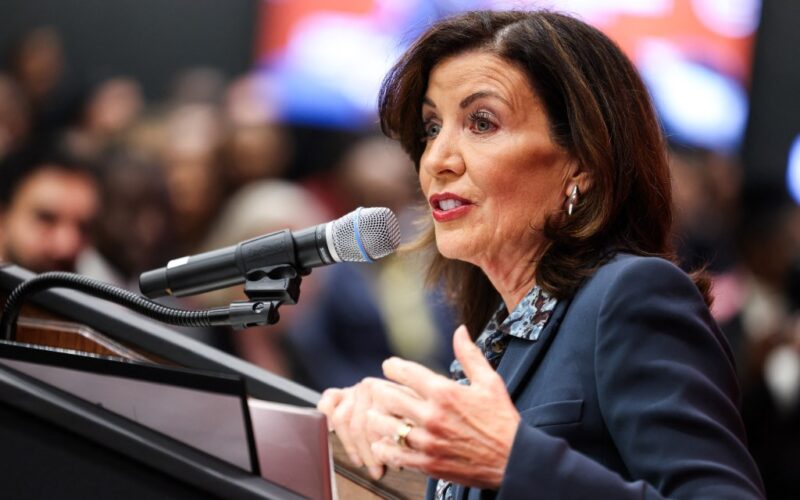Gov. Hochul was right to sign off on a 24-mile natural gas pipeline bringing the fuel to New York. The Northeast Supply Enhancement pipeline (NESE), once denigrated by the governor as the state moved towards implementing the clean energy goals it set out with much fanfare in 2019, had received both business and labor support, but most importantly, it will help the state head off the real possibility of energy shortfalls and blackouts.
Now, let’s be clear that the push to move away from fossil fuels and dirty energy generation is worthwhile, and not just some liberal fantasia. The threat and consequences of climate change are very real, and it should be in any state’s long-term interest to prioritize clean and renewable energy involving not only technologies like wind and solar, but also atomic power, which, to her credit, Hochul is also pursuing.
But if we have to lean on certain stopgaps like this natural gas pipeline, so be it, but Hochul is correct that the state’s focus should be on continuing to develop a wide range of energy solutions with a specific emphasis on continuing towards the long-term objectives of clean energy independence, even as we continue using alternatives. Another natural gas project, the Constitution pipeline, which is larger than NESE, has been shelved.
It is the job of our leaders to make decisions for the good of the whole not only now but in the future, and that means standing firm, even as public support for renewables might wax or wane. This sign-off doesn’t mean that the governor is or should be less committed to continuing down that path, it’s merely a recognition that we’re not getting there fast enough and there are real risks to wishful thinking.
This is not 2019, when the energy benchmarks were set with high hopes. Six years later, it’s clear that we are not meeting the goals, so there must be an adjustment. Pretending that nothing has changed since 2019, as some, like rebel Lt. Gov. Antonio Delgado, are doing, is ludicrous.
Rolling blackouts are political dynamite, but we should also remember that they are dangerous, even life-threatening. In the summer, as increasingly hot weather pushes people to stretch the limits of the powered grid, a blackout can stop the air conditioners that people, especially older adults and other vulnerable groups, need to stay healthy, among other things.
The notion that we will need additional systems online beyond what is already planned in order to meet energy demand is not wild speculation, but has been carefully laid out in the periodic reports of the New York Independent System Operator, which have found that downstate especially would have significant energy deficiencies over the next few years in the absence of replacement projects that are not set to be completed in time to avoid impacts that could last hours.
One day, our renewables will be able not just to cover the state’s energy needs but generate a surplus that could even bring in additional revenues as we sell the runoff. Until then, we have to think pragmatically.
While the NESE pipeline approval makes plenty of sense to provide energy to millions, what was the point of the state keeping the gas-fired Greenidge cryptocurrency plant going upstate for another five years? Making exceptions to the 2019 climate law for the public benefit and economic necessity is one thing, but who is benefiting from this arrangement?








